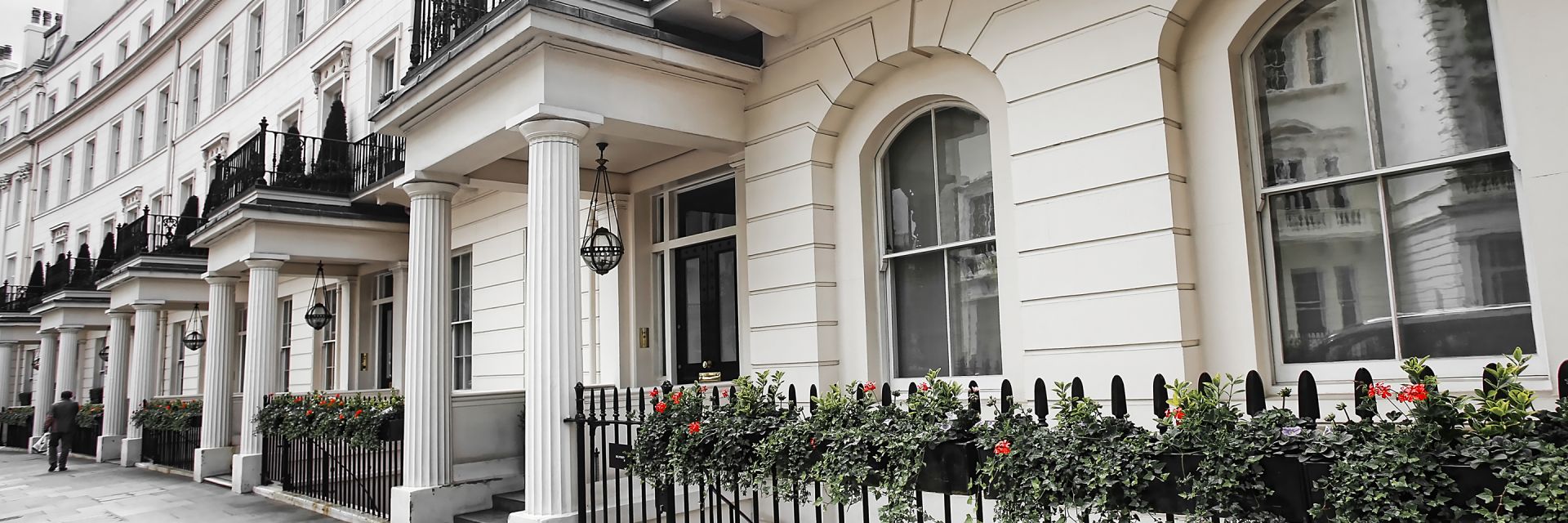
London property lures international buyers back
08 November 2021
5 minute read
Foreign buyers have long been attracted to London property – in part thanks to the UK’s stellar reputation as a good place for doing business. Today, following a COVID-induced absence, the relaxation of travel restrictions is once again bringing overseas property buyers back to the UK capital.
While it may not quite yet be business as usual, with Heathrow Airport passenger numbers still only at 38% of pre-pandemic levels as of September 20211, this is already double the number of 12 months ago – with the promise of more to come.
And those now returning to the UK are finding that London’s credentials as a safe-haven investment remain – despite a housing market that’s defied conventional wisdom in the last 18 months.
Reality returns to UK property market
Rewind to the start of the pandemic and months of cooped-up living initially drove an urban exodus, as the idea of a new life in the country appealed to many. Buyers now forced to work from home, became engaged in a so-called ‘race for space’ – with a desire for bigger homes to live and work in, as well as gardens, and easy access to the coast and countryside.
Yet today, things feel different. A dose of reality has returned to the UK property market following the shock of the pandemic. Commuters are pouring back into the capital and it’s once again becoming the main driving force of national house price growth.
“It’s clear demand for London property is back to pre-pandemic levels; however, the underlying story isn’t quite that simple,” says Stephen Moroukian, Product and Proposition Director at Barclays Private Bank.
Reversal of pandemic trends
Figures from Knight Frank reveal the number of buyers moving from urban to rural locations in the UK peaked in January 2021, and has been in decline ever since2.
An early pandemic trend was the shift away from apartment-based living. Flats lost not only their popularity, but also their value in many towns and cities across the country, according to research by the Office for National Statistics3 – with apartments failing to keep pace with price rises for detached and semi-detached homes in the period from January 2020. Rents in London also took a tumble during the worst of the pandemic, falling as much as 10% at one point, according to Zoopla4.
But the UK property market in general was one of the few sectors to have shrugged off the COVID-19 crisis. The average UK property is today £235,000, which equates to being £17,500 more expensive than before March 20205.
Interestingly, London property prices increased just 5.1% during the first year of the pandemic, compared to 9.6% for villages, 9% for towns and 7.8% for cities – reversing the trend of the last decade where London posted the highest average annual growth.
“London has enjoyed incredible property price growth over the last 30 years and there haven’t been many events like the pandemic where the rest of the UK has increased more in value,” says Moroukian at Barclays Private Bank.
Although for London, it’s more nuanced than that. A shortage of available UK housing stock (during the pandemic) made buyers refocus on certain neighbourhoods in the capital.
Those areas with bigger houses and gardens close to central London performed particularly well, such as the traditional ‘wealth corridors’ that run north through Islington and St John’s Wood towards Highgate; the southwest corridor from Fulham and Clapham to Wimbledon; and the emerging corridor from Ealing to Chiswick.
Savills is reporting that properties with five or more bedrooms in prime southwest and west London are now 7.3% higher than they were in the third quarter of 2020, compared to just 2.4% across the capital as a whole.
What investors can learn from London’s housing market
The resilience of the UK capital is there for all to see, with the average property price rising by more-than 500% in just three decades5.
And as buyers return to the market, Knight Frank is predicting that the prime central London market will outperform all other UK regions by 2025, with cumulative growth of 25%6.
Buyers and renters are also beginning to see London in all its former glory with people craving well-located apartment living with a proximity to work, a good high street, and public transport – rather than outside space. As such, it’s a complete reversal of pandemic trends.
Overseas investors are coming back to the traditional prime real estate areas such as Chelsea, Kensington and Belgravia. Urban pieds-à-terre could see a resurgence, too, with owners embracing the country while keeping a foothold in London.
New London commuter belt emerging
For those making the move out of London but still wanting easy access to the capital, many are settling in the prime regional urban markets of Oxford, Bristol, Bath, Cheltenham, Winchester and Cambridge. A new commuter belt is stretching far beyond the outskirts of London.
Sales of £1 million-plus properties have also surged outside the capital7,as a broader geographical spread of sought-after, luxury properties emerges.
London calling
As London’s importance to Britain resumes and the future hybrid working model evolves, the return of a more “normal” property market beckons – with London again very much front and centre.
“The fundamentals for London have remained strong,” says Moroukian at Barclays Private Bank. “The UK capital has always been a property hotspot for global high-net-worth individuals.
“And with the return of international buyers, which could create a mismatch in supply and demand, this is all likely to continue to support future growth.”